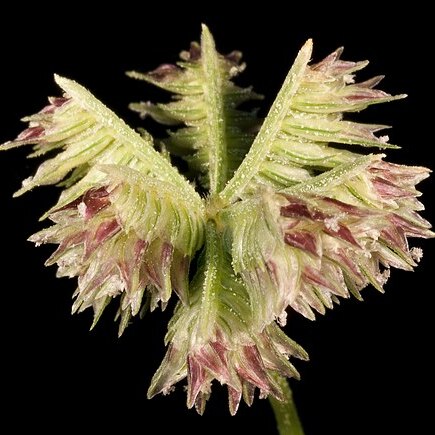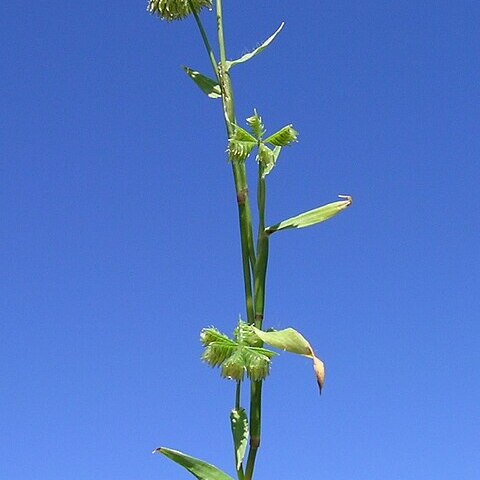An annual grass. It lies along the ground. It can grow 15-30 cm high. The stems are slender. These taper towards the tip. The leaf sheath is smooth, loose and keeled. The ligule is thin and hairy of the edges. The flowering stalk has 6 finger-like spikes. These are 1-2 cm long and clustered in a head.


